Police believe Albert DeSalvo was likely the Boston Strangler, but questions still remain about the true identity of this infamous 1960s serial killer.
In 1960s Boston, women across the city flooded stores in search of one thing: locks. Deadbolts and door chains quickly sold out, and animal shelters saw a surge in people looking for dogs. Word had spread that there was a killer on the loose, the so-called Boston Strangler.
For two terrifying years, single women in Boston seemed to die at an alarming rate. The killer struck women young and old and targeted homes in different neighborhoods. Police soon noticed a pattern in how the Boston Strangler sexually assaulted and posed his victims, tying bows around their necks using their stockings or bras.
But despite their vigorous search for the killer, the Boston Strangler proved elusive — until 1964. Then, a robber and rapist named Albert DeSalvo claimed that he was the murderer. A known braggart with a story that didn’t completely hold up, DeSalvo’s claims came under suspicion and never led to a conviction. Instead, he was killed in jail in 1973, leaving the mystery unsolved.
So it remained for decades — until a DNA test in 2013 finally offered the city an answer about the Boston Strangler’s true identity.
Inside The Boston Strangler Murders
On June 14, 1962, the Boston Strangler struck for the first time. The killer sneaked into the small brick apartment of 55-year-old Anna Slesers and strangled her to death with the belt of her blue housecoat. When police arrived at the scene the next morning, they found that Slesers had also been sexually assaulted and that the belt around her neck was tied into a bow.
Her son, who had found her body, insisted that his mother had no enemies, according to the Boston Globe. Police speculated that she had interrupted a robbery and that the burglar had killed her.
But then two more women were killed in an eerily similar fashion. Just weeks later, police discovered the bodies of 68-year-old Nina Nichols in Brighton and 65-year-old Helen Blake in Lynn. Both women had their stockings tied in a bow around their necks, while Blake also had her bra fastened around hers.
“The stocking was the instrument of death,” a Boston Globe reporter wrote of Blake’s death after the story broke, “the bra knotted at the nape as though the killer wanted to make sure of his work.”
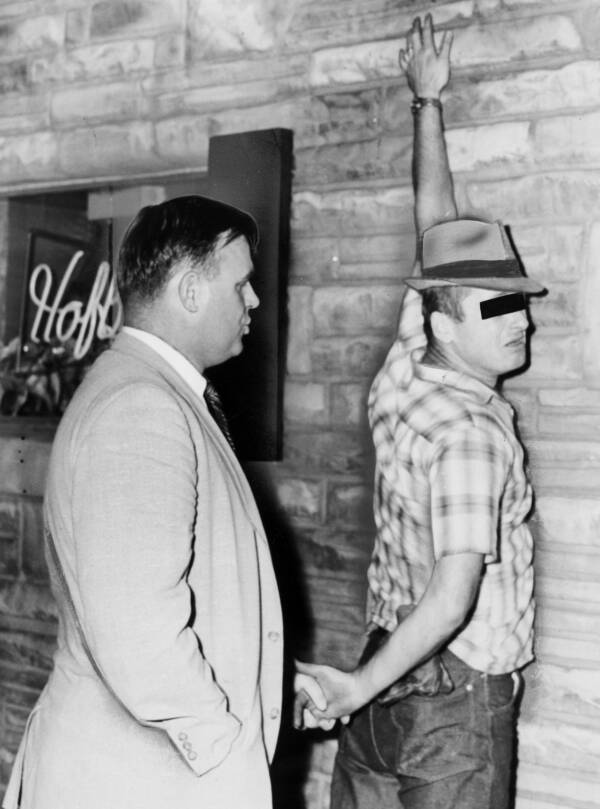
Joseph Runci/The Boston Globe via Getty ImagesA Boston police detective questions a suspect following Nina Nichols’ murder.
From there, the deaths came quickly. In August, 75-year-old Ida Irga was found murdered. Two days later, 65-year-old Jane Sullivan was discovered strangled with her own nylons. And that December, 21-year-old Sophie Clark’s body was found. The college student had been sexually assaulted and strangled. Unlike the other victims, she was young and Black.
“You’re asking if people were scared?” a veteran reporter said of the spate of stranglings 40 years later, according to Mass Moments. “I covered the murders, and I was scared. I had an elderly mother in Medford, and after the fifth strangling, I was so scared I went over to her apartment and installed two deadbolts… But after a while you couldn’t buy ’em. Sold out.”
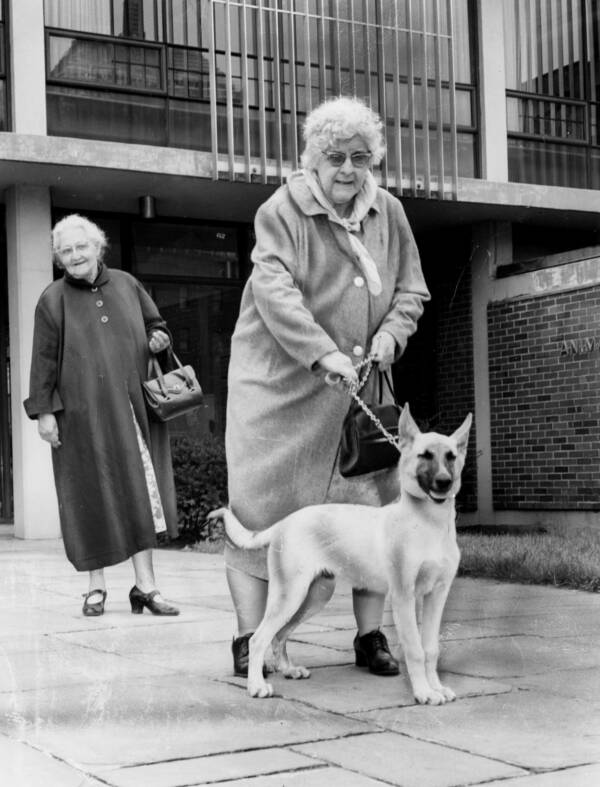
Dick Fallon/The Boston Globe via Getty ImagesMary Coltin with her new watchdog, Duke, who Coltin acquired to protect herself from the Boston Strangler, 1966.
Deadbolt locks and door chains flew off the shelves, and Mass Moments reports that there were so many requests for guard dogs that the Animal Rescue League ran out. Meanwhile, the Boston Strangler continued to kill.
Patricia Bissette, 23, was found dead on Dec. 31, 1962. Mary Brown, 69, was discovered on March 6, 1963. The Boston Strangler took three more victims that year: 23-year-old Beverly Samans, 58-year-old Evelyn Corbin, and 23-year-old Joann Graff. The women had all been sexually assaulted and strangled.
Police struggled to catch up, clinging to clues about a man in green who offered to paint apartments near the victims and questioning various suspects. They were no closer to catching the Boston Strangler when he killed for the final time, murdering 19-year-old Mary Sullivan in January 1964.
“It’s quite apparrent [sic] that this little girl was strangled,” a police lieutenant told the Boston Globe. But by who? The Boston Strangler’s identity remained elusive. That is, until a man named Albert DeSalvo claimed credit for the murders.
The Grisly Confession Of Albert DeSalvo
In October 1964, Albert DeSalvo, 33, was arrested for breaking into a woman’s apartment, tying her up, and assaulting her. He told police he’d broken into hundreds of homes and committed four rapes, bragging: “If you knew the whole story you wouldn’t believe it… It’ll all come out.”
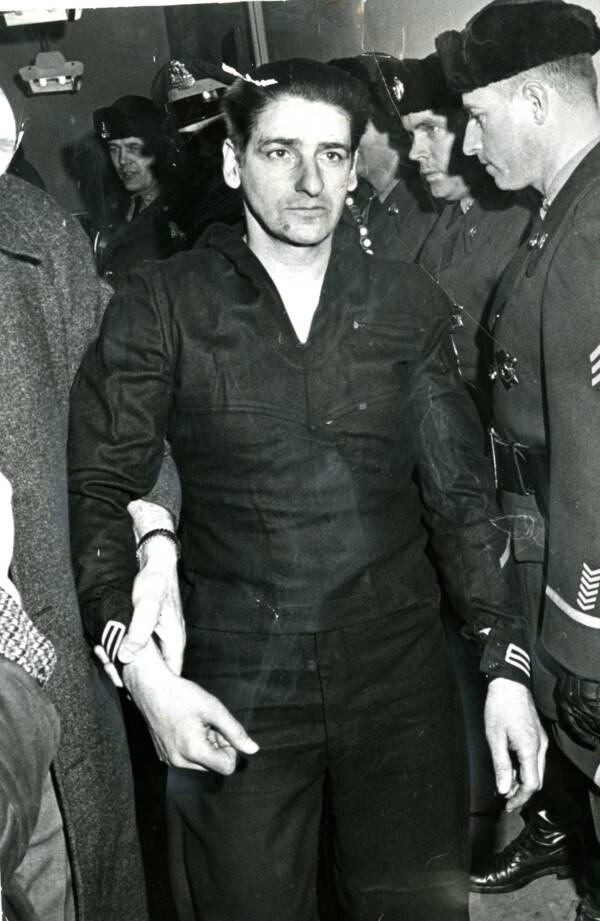
Paul Connell/The Boston Globe via Getty ImagesAlbert DeSalvo in 1967, shortly after he escaped from Bridgewater State Prison.
Born on Sept. 3, 1931, DeSalvo had a violent childhood. He and his siblings were “sold” at one point by their father, and DeSalvo and his brother were regularly beaten. DeSalvo also later recalled that he once watched his father “knock my mother’s teeth out” and then “break every one of her fingers.”
As a young man, DeSalvo started to develop a reputation as a sexual criminal. He became known as the “Measuring Man” for pretending to be a modeling agent so that he could grope women — leading to an arrest in 1960 — and the “Green Man” for a series of home invasions and sexual assaults he committed across New England.
But police didn’t take DeSalvo seriously as a suspect at first. According to Mass Moments, he was a known braggart and didn’t match physical descriptions they had of the Boston Strangler. What’s more, his name had never come up during their investigation, and there was no physical evidence linking him to any of the crime scenes.
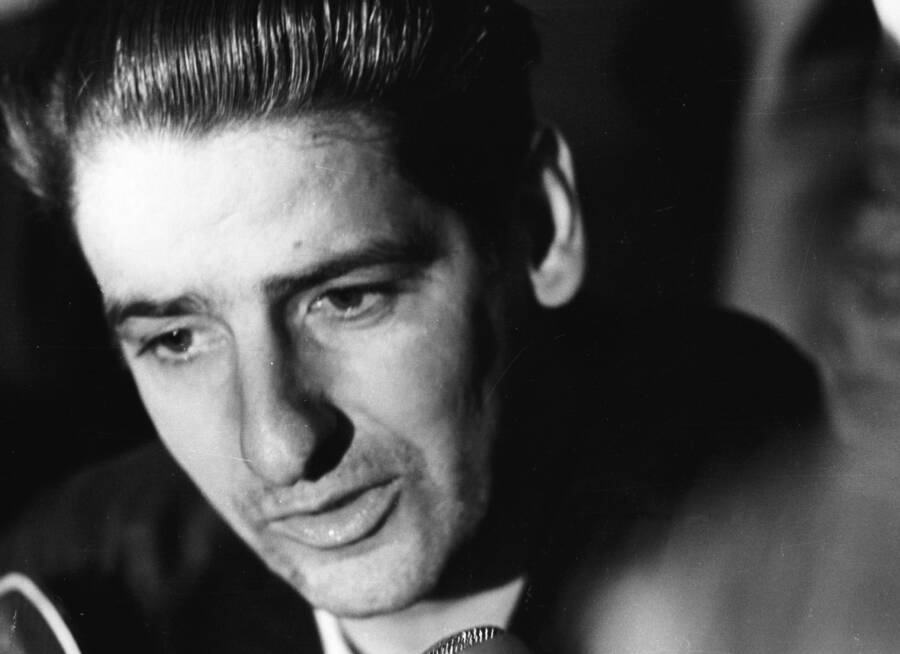
Harry Benson/Getty ImagesAlbert DeSalvo claimed to be the Boston Strangler, but not everyone believed him at first.
The police sent him to the Bridgewater State Hospital for the Criminally Insane, where DeSalvo befriended a murderer named George Nassar. Mass Moments reports that they came up with a plan to share the reward money for information on the Boston Strangler. DeSalvo would tell Nassar, and Nassar would tell his attorney, F. Lee Bailey.
“He convinced me by the description. He was getting it off his chest. I was the first person, apparently, to who he had really spoken about specifics of each crime,” Nassar later told WBZ-TV.
On March 6, 1965, Albert DeSalvo formally confessed to being the Boston Strangler. He said that he had killed 11 suspected Boston Strangler victims, as well as two other women, including 85-year-old Mary Mullen. In June 1962, Mullen had been found dead at her home. DeSalvo said she died of a heart attack in his arms, which her death certificate confirmed.
But though DeSalvo seemed to know a great deal about the murders, down to details like the color of Mary Brown’s kitchen faucet, he was not charged with the Boston Strangler’s crimes. A forensic psychiatrist found that he was schizophrenic and a “compulsive confessor who desperately needs to be recognized.” Instead, Albert DeSalvo was found guilty of robbery and assault, and he was sentenced to life in prison for the “Green Man” rapes.
Eight years later, in November 1973, he was stabbed to death by a fellow inmate. Anything else that DeSalvo knew about the Boston Strangler died with him — if he indeed knew anything at all. Some doubted the veracity of his confession and feared that the true killer was still out there.
That doubt lingered for decades. But a DNA test in 2013 finally offered the city of Boston some answers.
How DNA Offered Answers About The Boston Strangler — And Left More Questions Unanswered
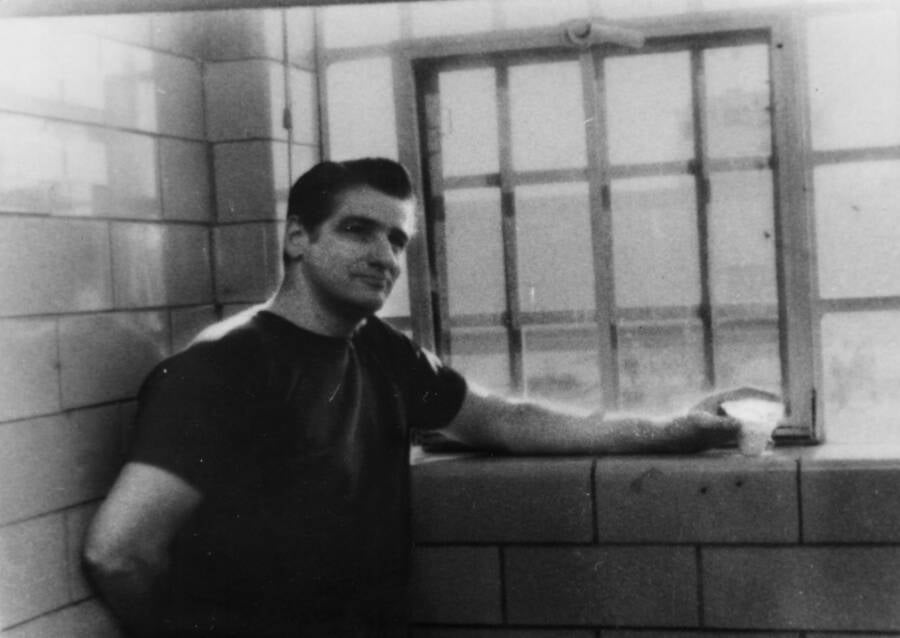
Getty ImagesAn undated photo of Albert DeSalvo, the self-confessed Boston Strangler, in prison.
Though Albert DeSalvo died in 1973, the mystery of the Boston Strangler didn’t die with him. Some believed his confession. Others suspected that DeSalvo had admitted his guilt only for attention and money and that the true murderer walked free.
Starting in 2001, police turned to DNA to try and solve the mystery of the Boston Strangler for good.
Then, investigators exhumed DeSalvo’s body to test his DNA with the only DNA evidence ever recovered — seminal fluids found on Mary Sullivan’s bed. To their disappointment, the samples didn’t match.
But as DNA technology developed, investigators decided to try again. In 2013, they tested the DNA left on a water bottle by DeSalvo’s nephew against the seminal fluids left on Sullivan’s bed. This time, the two samples matched. To be sure, investigators exhumed DeSalvo’s body once again and tested DNA from his femur and three teeth — and found another match.
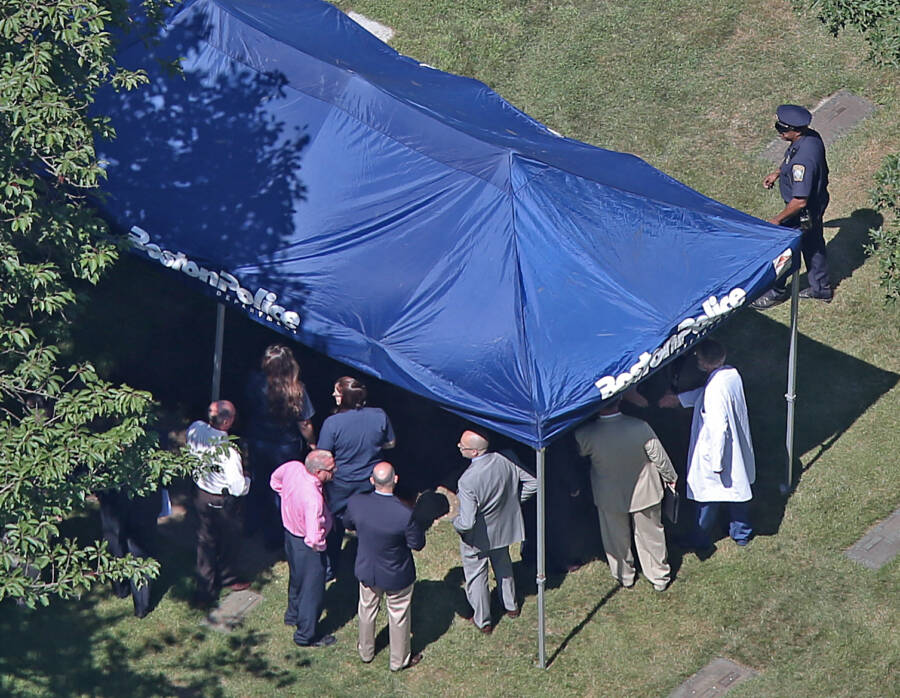
David L Ryan/The Boston Globe via Getty ImagesThe 2013 exhumation of Albert DeSalvo’s remains found that his DNA matched evidence left at one of the Boston Strangler’s crime scenes.
Despite this discovery, the DeSalvo family stated that the DNA match didn’t prove that Albert DeSalvo had killed Mary Sullivan. Their lawyer, Elaine Sharp, noted that DeSalvo’s nephew hadn’t agreed to provide the DNA and that the evidence itself only proved that DeSalvo had been at the scene.
“Just because you find DNA that matches somebody on their body doesn’t mean that they murdered them,” she told The New York Times.
But police struck a different note. The DNA evidence, they said, put the investigation on the “threshold of unprecedented certainty” when it came to Mary Sullivan and Albert DeSalvo. DeSalvo had admitted to killing Mary Sullivan, and his DNA was at the crime scene. Ergo, he’d murdered her.
That said, it didn’t necessarily prove that DeSalvo was the Boston Strangler. It only suggested that he’d killed Mary Sullivan, not the other 12 women who DeSalvo had confessed to murdering.
“We don’t claim with certainty that Albert DeSalvo is a suspect in each of them,” District Attorney Daniel F. Conley of Suffolk County admitted to The New York Times in 2013.
As such, some mystery still lingers around the Boston Strangler case. And the spate of violent murders continues to fascinate, as proven by the 2023 Hulu film Boston Strangler. Starring Keira Knightley and Carrie Coon, the new movie tells the story of two journalists attempting to connect the Boston Strangler’s crimes.
Decades after the killer stalked the city of Boston, the fear he left in his wake remains potent. Maybe the Boston Strangler was Albert DeSalvo; maybe it was someone else. That doubt is enough for sleepless nights, reinforced locks, and a new guard dog.
After reading about the Boston Strangler, discover the mystery of the Chicago Strangler, the suspected serial killer who may have killed more than 50 women. Or learn about the gruesome crimes of Richard Ramirez, the California serial killer dubbed the Night Stalker.






